While their chirping may be harmless in small numbers, cricket infestations can quickly become a serious nuisance for South Texas homes and businesses. These nocturnal insects are drawn to warmth, moisture, and bright outdoor lighting—often slipping indoors through tiny gaps or open doors. Once inside, they can damage fabrics, wallpaper, and stored paper goods while leaving behind stains and foul-smelling droppings. Their presence can also attract other pests, such as spiders and rodents, that prey on them. In severe outbreaks, large numbers of crickets can gather around lights, walls, and sidewalks, creating unpleasant odors and unsightly conditions. At LONESTAR Pest Solutions, we identify entry points, locate nesting and activity areas, and implement targeted treatments to restore peace—and quiet—to your property.
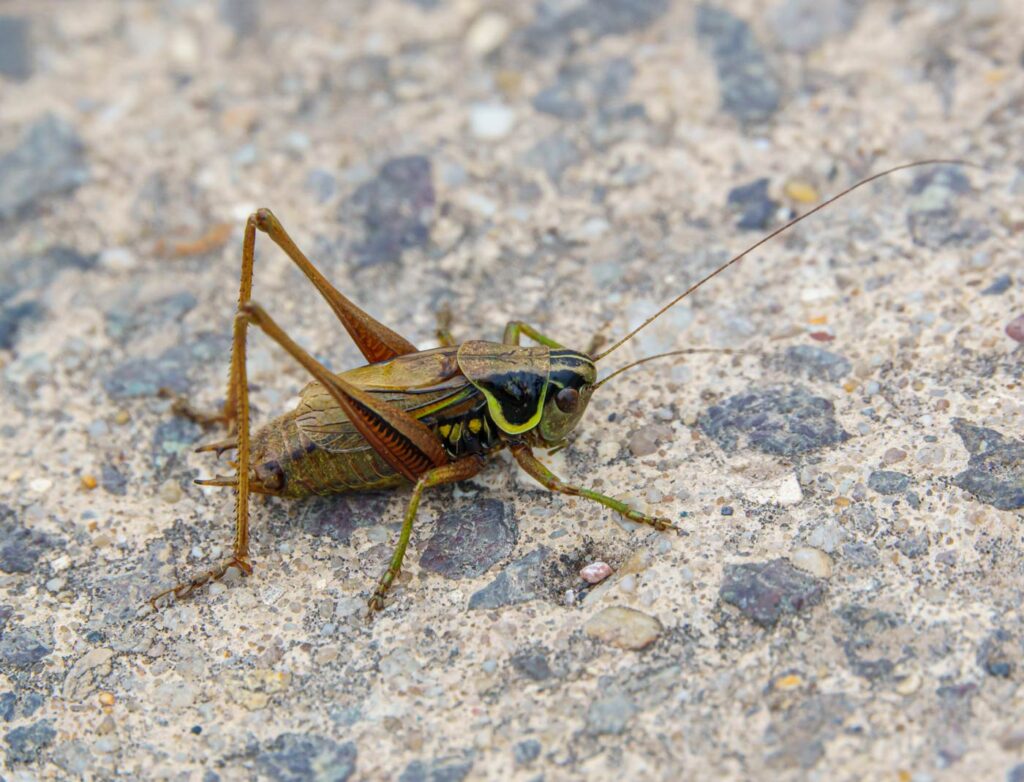
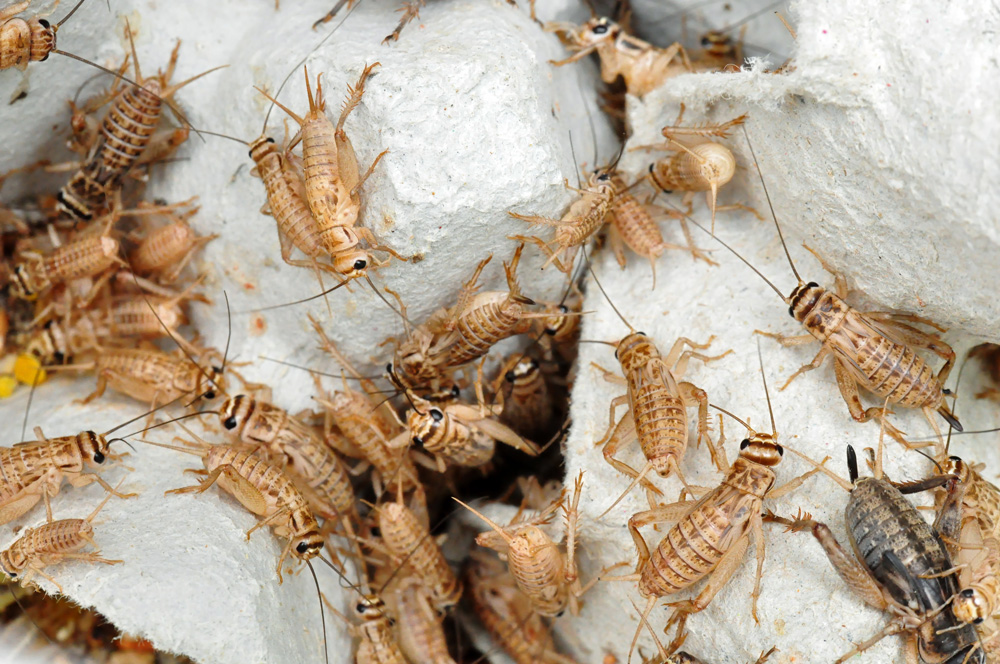
Common in homes and businesses, house crickets are the type most people hear chirping indoors. While not dangerous, they’re a nuisance when they gather in large numbers.
Size, Color: About ¾–1 inch long, yellowish-brown with three dark bands on the head.
Identifying Characteristics: Known for their loud chirping, especially at night; long antennae.
Where does it nest/hide? Warm, dark areas inside homes, basements, and near heaters or appliances.
When does it typically reproduce? Warm months, with females laying eggs in soil or cracks.
What is it attracted to? Warmth, light, and moisture. Indoors they’re drawn to kitchens, basements, and storage areas.
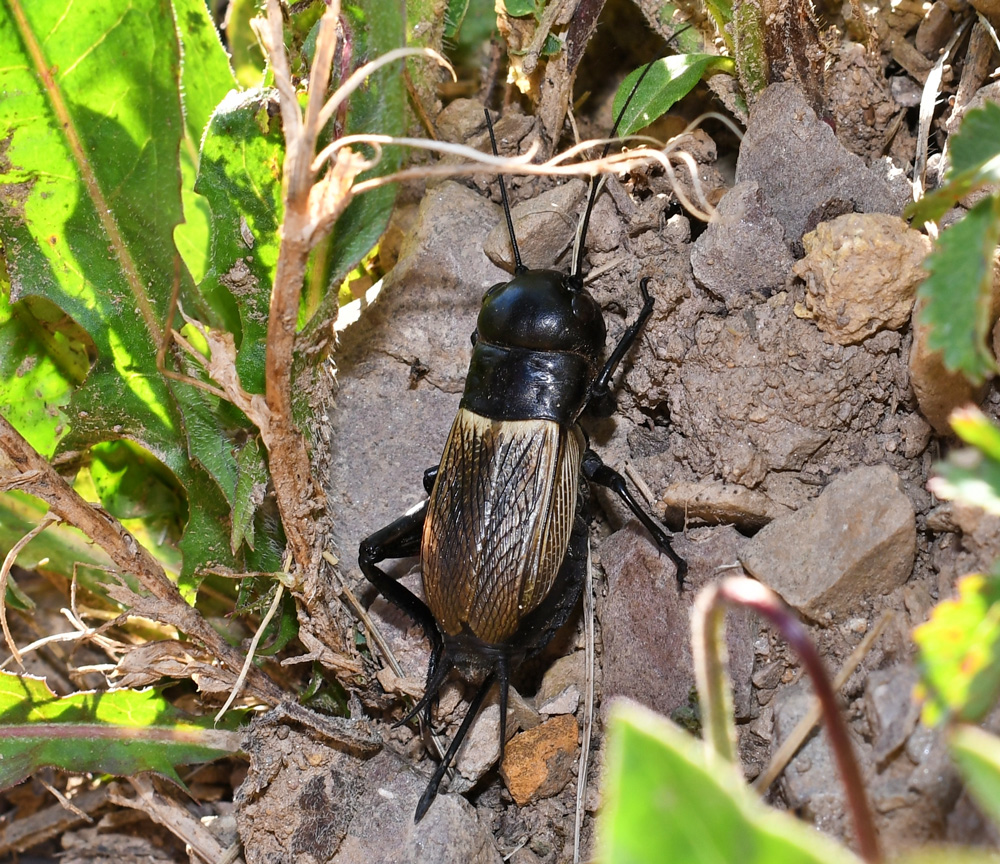
Field crickets are outdoor pests but invade structures in late summer and fall, often in overwhelming numbers.
Size, Color: ½–1¼ inch long, dark brown to black.
Identifying Characteristics: Sleek body with large hind legs; males chirp loudly.
Where does it nest/hide? Outdoors in tall grass, weeds, mulch, and cracks in soil; will enter homes and businesses through gaps under doors.
When does it typically reproduce? Eggs are laid in soil during late summer; hatch the following spring.
What is it attracted to? Bright lights at night, moisture, and shelter in cool weather.
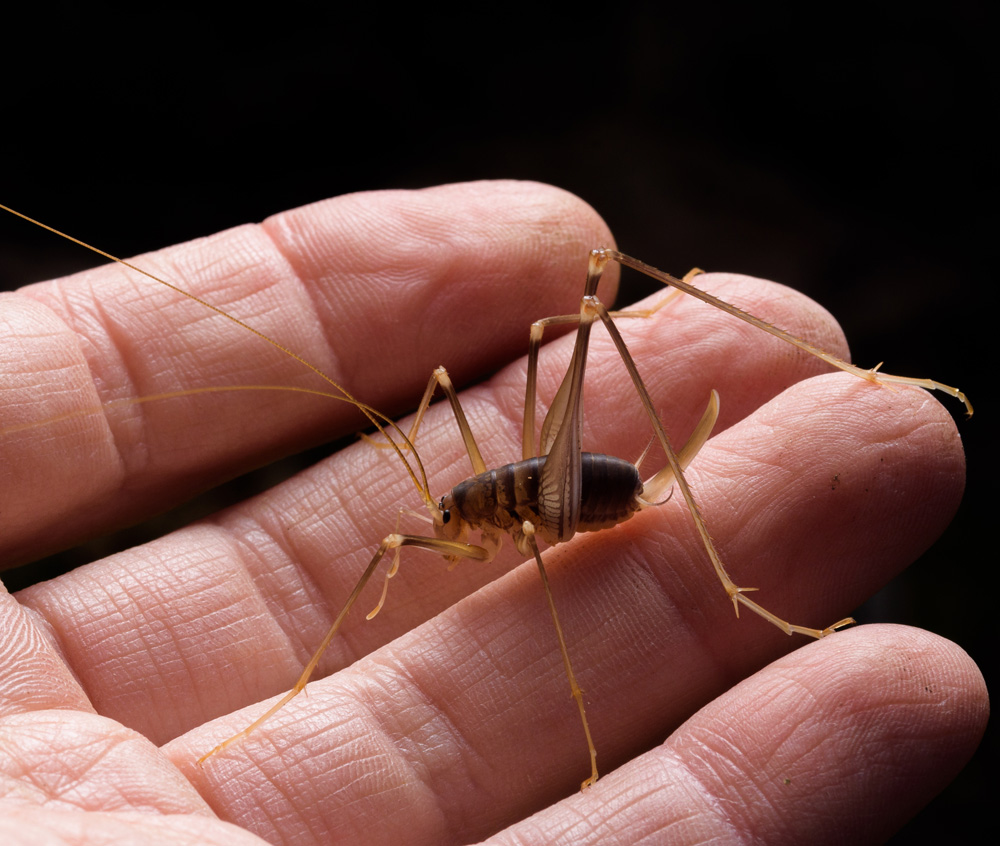
Camel crickets don’t chirp but alarm people with their humpbacked appearance and long legs. They often jump when disturbed.
Size, Color: ½–1½ inches long, light to dark brown with mottled patterns.
Identifying Characteristics: Humpbacked shape, long antennae, and spider-like legs. Silent—do not chirp.
Where does it nest/hide? Damp, dark areas like basements, crawlspaces, garages, and sheds.
When does it typically reproduce? Spring and summer in moist soil or organic matter.
What is it attracted to? Moisture, darkness, and cluttered storage areas.
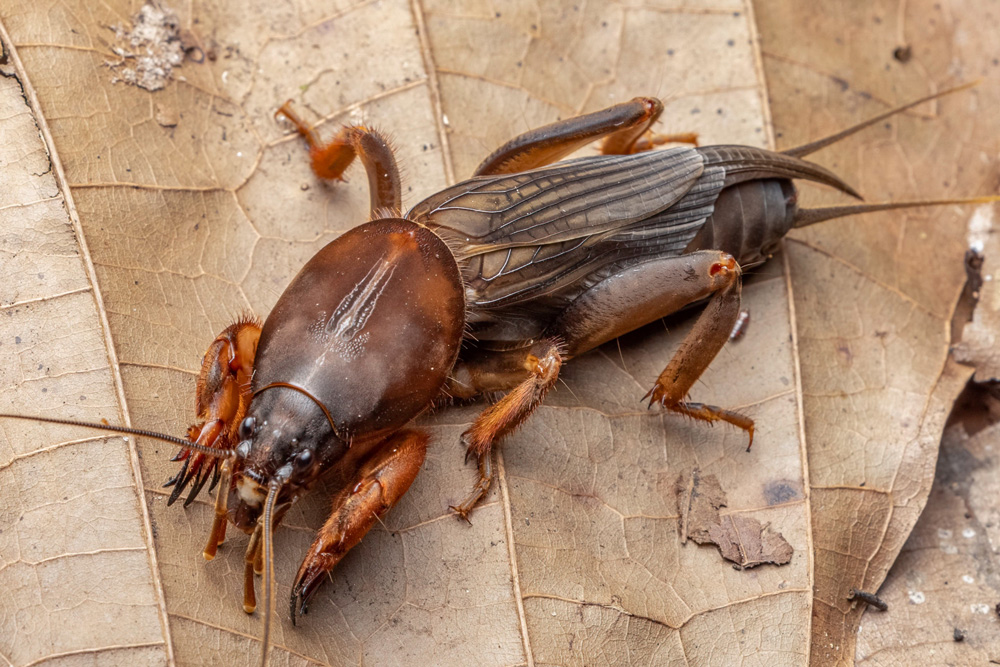
A destructive pest mostly found in lawns, golf courses, and landscaped areas, mole crickets burrow underground and damage turf by feeding on roots.
Size, Color: About 1–1½ inches long, light brown to tan.
Identifying Characteristics: Enlarged, spade-like front legs for digging; cylindrical body.
Where does it nest/hide? Underground burrows in moist soil, especially sandy areas.
When does it typically reproduce? Eggs are laid in soil in spring and hatch in summer.
What is it attracted to? Moist soil, turfgrass, and landscaped areas with irrigation.
No More Chirping, No More Stress At LONESTAR Pest Solutions, our process is simple but thorough.
Identify cricket entry points inside and around the home
Locate nesting and activity areas (often damp, dark spaces)
Assess outdoor lighting and landscaping that may attract crickets
Crickets around building perimeters can be killed with any of several insecticidal baits and sprays. Baits are granular products that include a food that is tasty for crickets and are applied to ground covers and other areas where crickets are congregating next to buildings.
Recommendations:
Lorem ipsum dolor sit amet, mea ei viderer probatus consequuntur, sonet vocibus lobortis has ad. Eos erant indoctum an, dictas invidunt est ex, et sea consulatu torquatos. Nostro aperiam petentium eu nam, mel debet urbanitas ad, idque complectitur eu quo. An sea autem dolore dolores.
As temperatures cool, crickets move indoors seeking warmth. Infestations inside basements, kitchens, and living areas become common, and chirping is at its loudest.
Our comprehensive pest inspection and prevention program focuses on early detection and elimination of conditions that attract unwanted pests. Through ongoing monitoring and tailored maintenance, we help ensure a safe, pest-free environment for your facilities year-round.
A proactive rodent management program reduces costly damage, contamination, and emergency callouts often associated with reactive treatments. By addressing potential issues early, LONESTAR Pest Solutions helps protect both your facilities and your budget through consistent, preventive care.
Our hassle-free scheduling and routine visits allow your team to stay focused on daily operations while we handle pest prevention behind the scenes. With reliable service you can count on, LONESTAR Pest Solutions ensures your facilities remain protected—without interruption or added effort on your part.
From effective elimination to long-term prevention, we provide more than just products — we provide peace of mind. Our professional-grade solutions are designed to target pests quickly and efficiently, while our certified experts are here to guide you every step of the way. With personalized guidance and the assurance of high-quality standards, you’ll have the confidence to take back control of your environment.
Great customer service with Team Theresa at the front desk & Cameron, my technician. They are a joy to work with. Theresa consistently like clock work schedules my appointments quarterly & timely. Cameron has done an incredible job going above & beyond maintaining my grandson’s sandbox outside – ant free! It is a such a relief. Never mind his meticulously attention to detail inside my home is much appreciated. Both Theresa & Cameron are a valuable asset to Lone Star Pest. Call them!
— Susie Gold
Lonestar does our quarterly pest control and we had to call for re-spray of our kitchen due to these 100 plus degree temperature days. They sent Eddie over right away and he was so helpful telling me to pick up dog food every day, plug drains daily, use vinegar solution for drains, and make sure they always spray an area of the custom cabinets that has a gap between the cabinets and wall. He was the best! Really educated me and was so patient and even funny as I stared wide eyed over his knowledge of all things cockroaches.
— Carolyn Wafford
Have used Lonestar for years for normal treatments inside and outside, but just recently used them for mosquito control prior to an outdoor graduation pool party. EXCELLENT RESULTS AND PHENOMENAL SERVICE! We had them do a general area fogging and then leave-behind portable remote controlled area “mister” — we haven’t seen a mosquito in two weeks!
— John Seamon
We have used Richard’s team for years. Recently we learned our neighbor’s had termites. We contacted Lone Star to learn about our options. The solution provided was better than solutions our neighbors suggested. In fact, we learned of several pitfalls that our neighbors might encounter (beyond higher cost over the long term).
— Timothy Smith